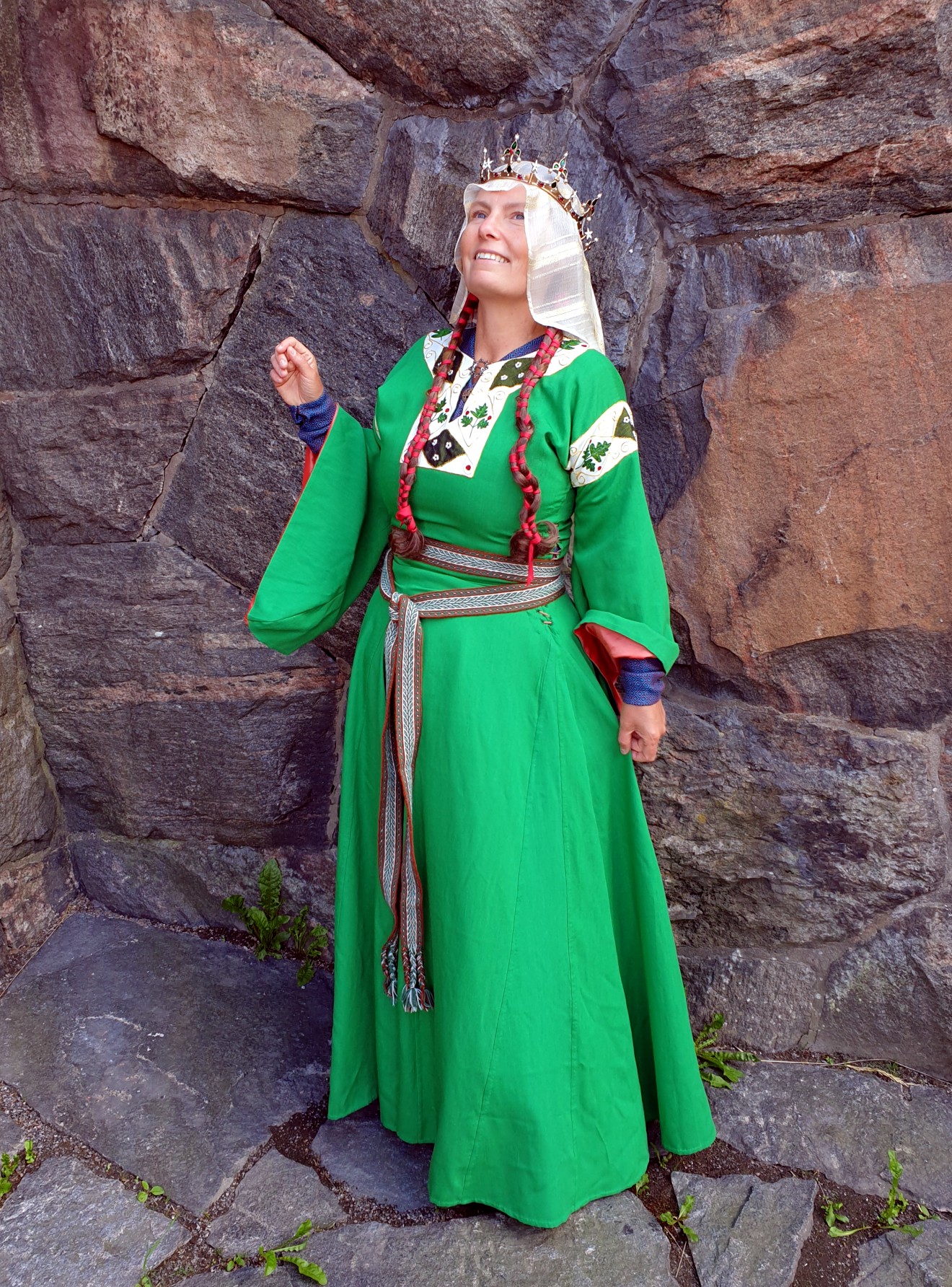Around 20 years ago we, the members of the medieval group Nylöse, had the idea to organize a 13th century Spanish event. It really was the perfect period for our interests: there's preserved music in the form of Alfonso X El Sabio's
Cantigas de Santa Maria, and we had an active choir, Alfonso X also made
a book of games and we had many enthusiastic board gamers, there is plenty of iconographic sources for the clothing, AND
very well preserved clothing from the same time, which makes us clothes nerds really happy, and finally: there are preserved
collections of recipes, and we all also liked period cooking.
However, for one reason or another this never happened. One of us made Spanish clothes, and that was that. I was working on my PhD, and there were so many other interesting things to do.
But this year, I don't really know why, I actually started on 13th century Spanish clothes.
My original plan was to make a saya encordata from blue silk that I bought with a gift card that I got for my 50th birthday from my friend Anna. That was in autumn 2019, so the fabric has been there for a while ;)
In January this year I finally got around to it. I think the thign that got me going was that I and a friend were ordering fabric from puresilks.us (I needed thin white silk for a regency petticoat), and when we had made teh order they didn't have any of the fabric and I had to either cancel or change the order, and with the situation being as it was (and is) in India I didn't want to cancel the order. So after a lot of discussion I bought striped silk for the pellote, the Spanish version of the sideless surcoat. And when I had that I finally got the motivation to start.
I started with the pellote, because it isn't very fitted, and my brain is still very much not recovered from my exhaustion.
Here it is, worn with a jersey dress of my own making ;)

Then I started on the shift, which, if you're fashionable/rich enough should have embroidery on the sleeves and around the neck.
I use aida for guidance, I do not see well enough to count the threads on fine linen, nor do I have the patience for it.


The next step was the so-called saya encordata, the laced saya, which is the red garment in the illumination above. Being still a bit wary about using the silk for my first try, and havign been really tmepted by this striped wool from Göteborgs Textil for years, I made a first version in striped wool. The 13th century Spanish people loved stripes, and so do I.
It wasa little tricky matching the stripes between teh straight front and back pieces and the gores, but in the end I did it from the right side, with small whip stitches, and I am very happy with it.
It does the job of keeping the bust in place admirably.


As you can see I have also made a veru Spanish headwear from the 13th and early 14th century. It is a 4 metres long strip of cotton fabric with 20 metres of cotton tape pleated on with box pleats. I should probably have gathere d it instead, but it so much easier to get the figure 8s if you box pleat the tape. Next time I will gather it. The 8s should also be smaller ideally. But it was my first trial.
You can see what I am aiming for in this Spanish sculpture.

I don't want it quite that high though, there are plenty of examples which are lower, but this one shows the construction so nicely.
Anyway, I am working on the lacing for the silk version, so any day now I will have the full outfit finished. If I'm not distracted by making modern clothes - I made a new pair of shorts yesterday.























